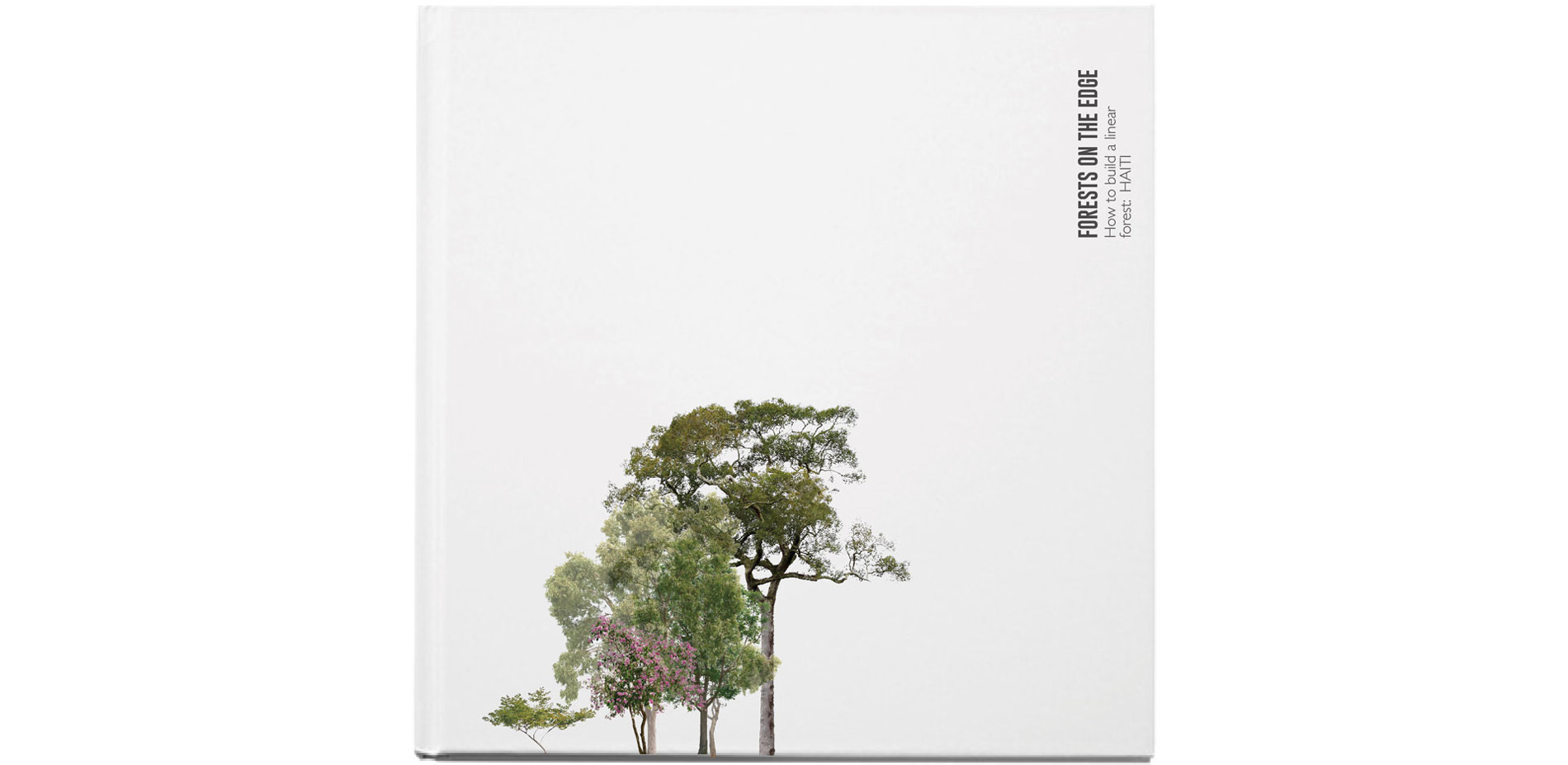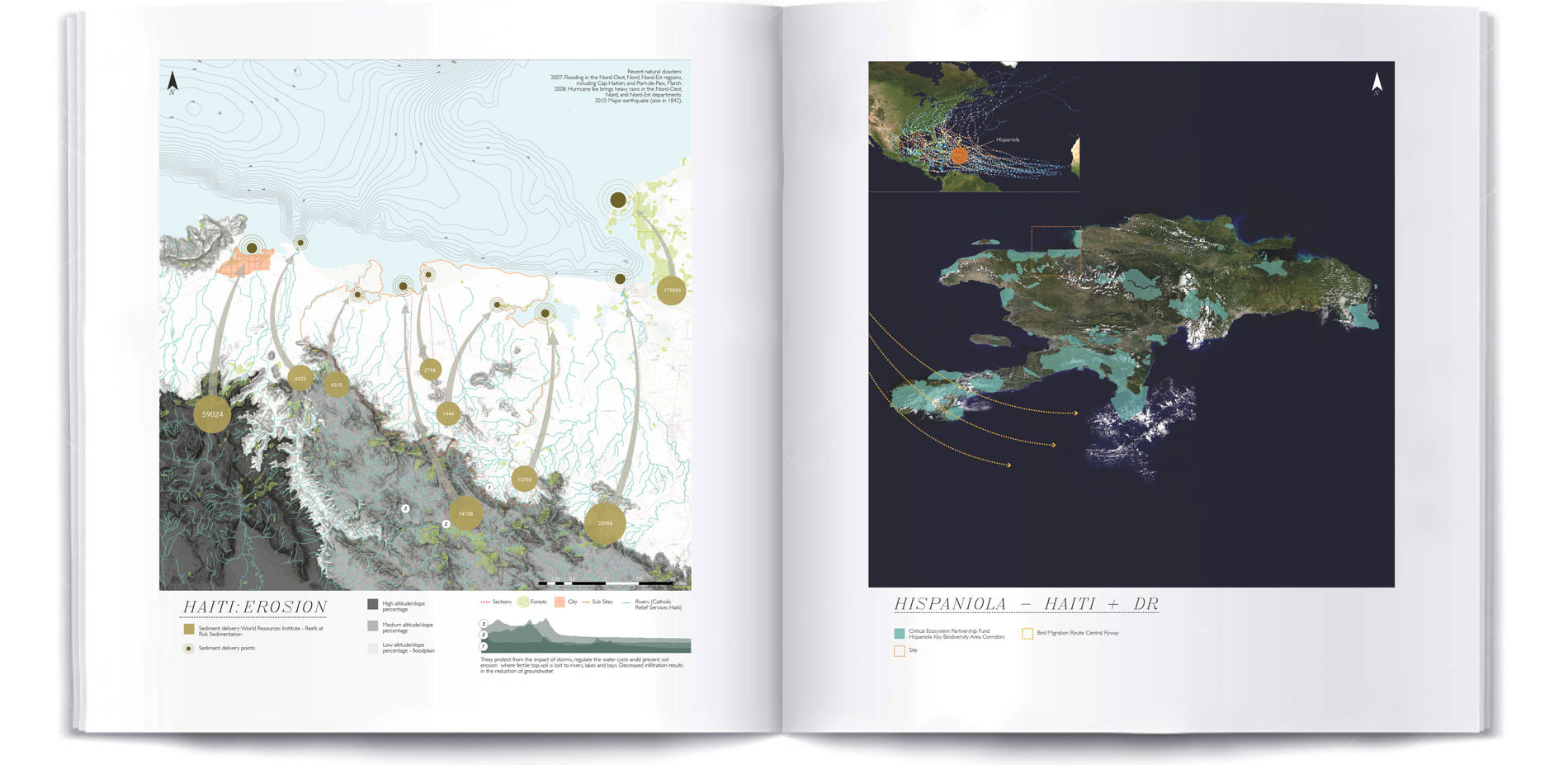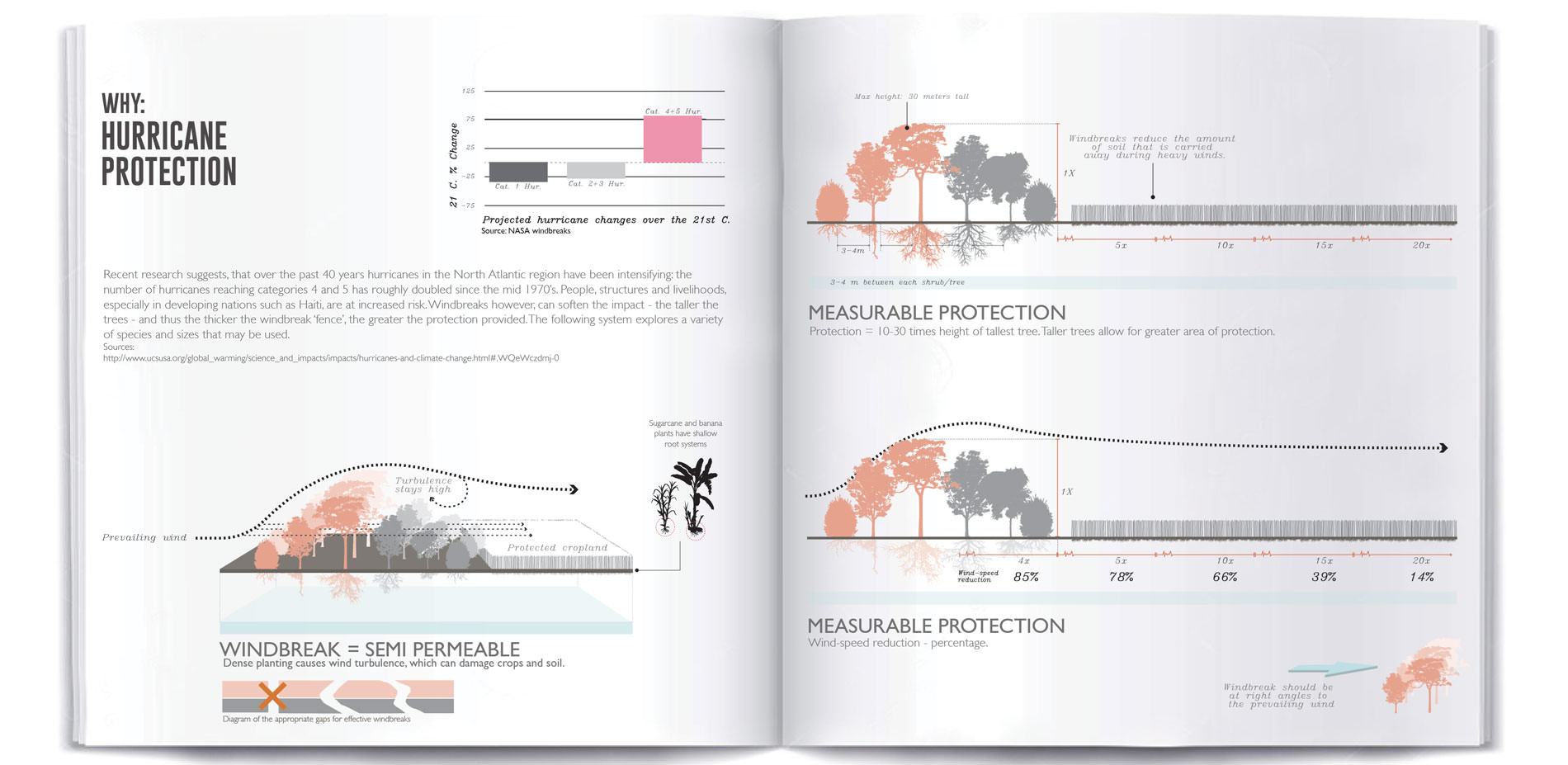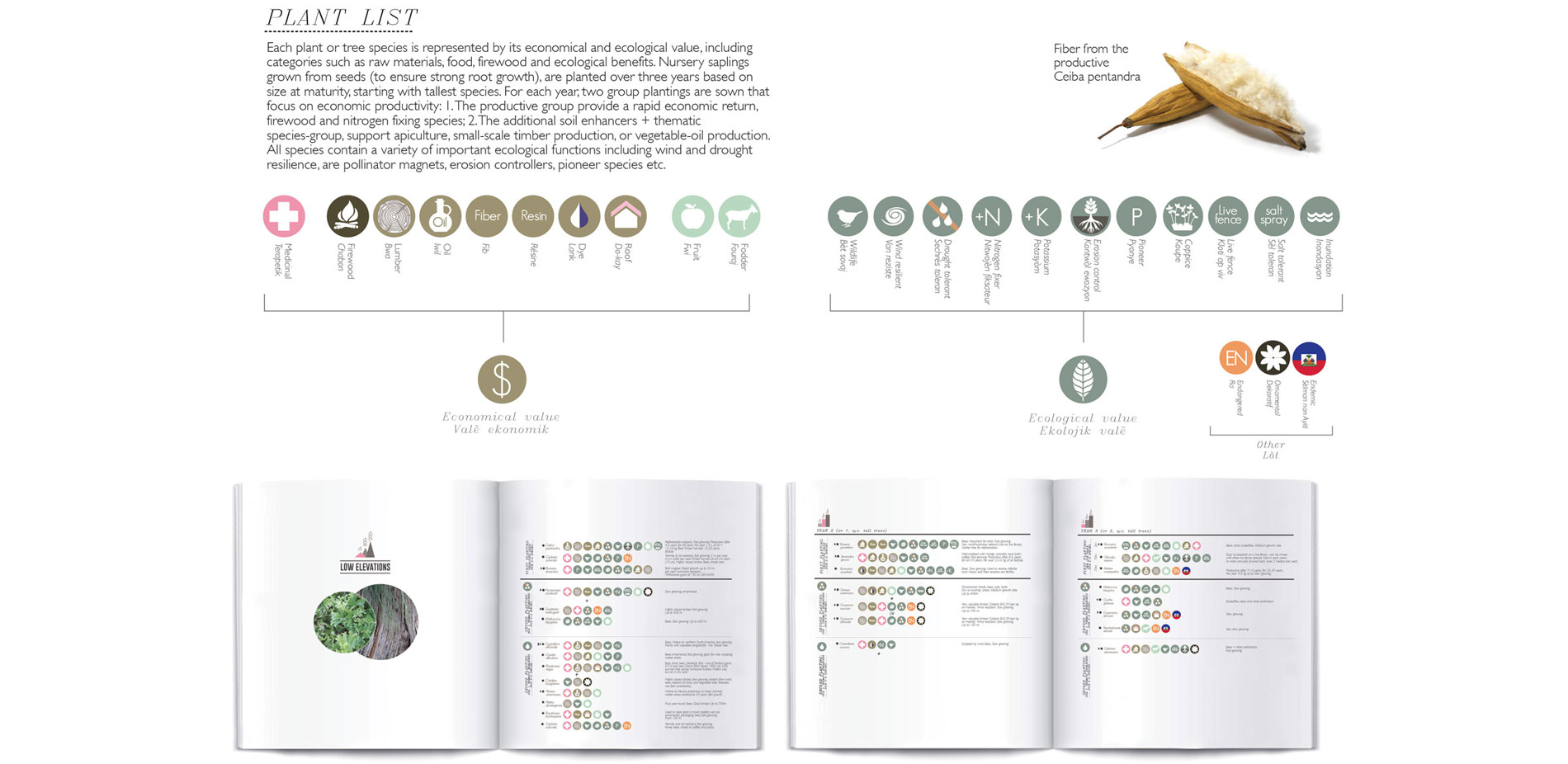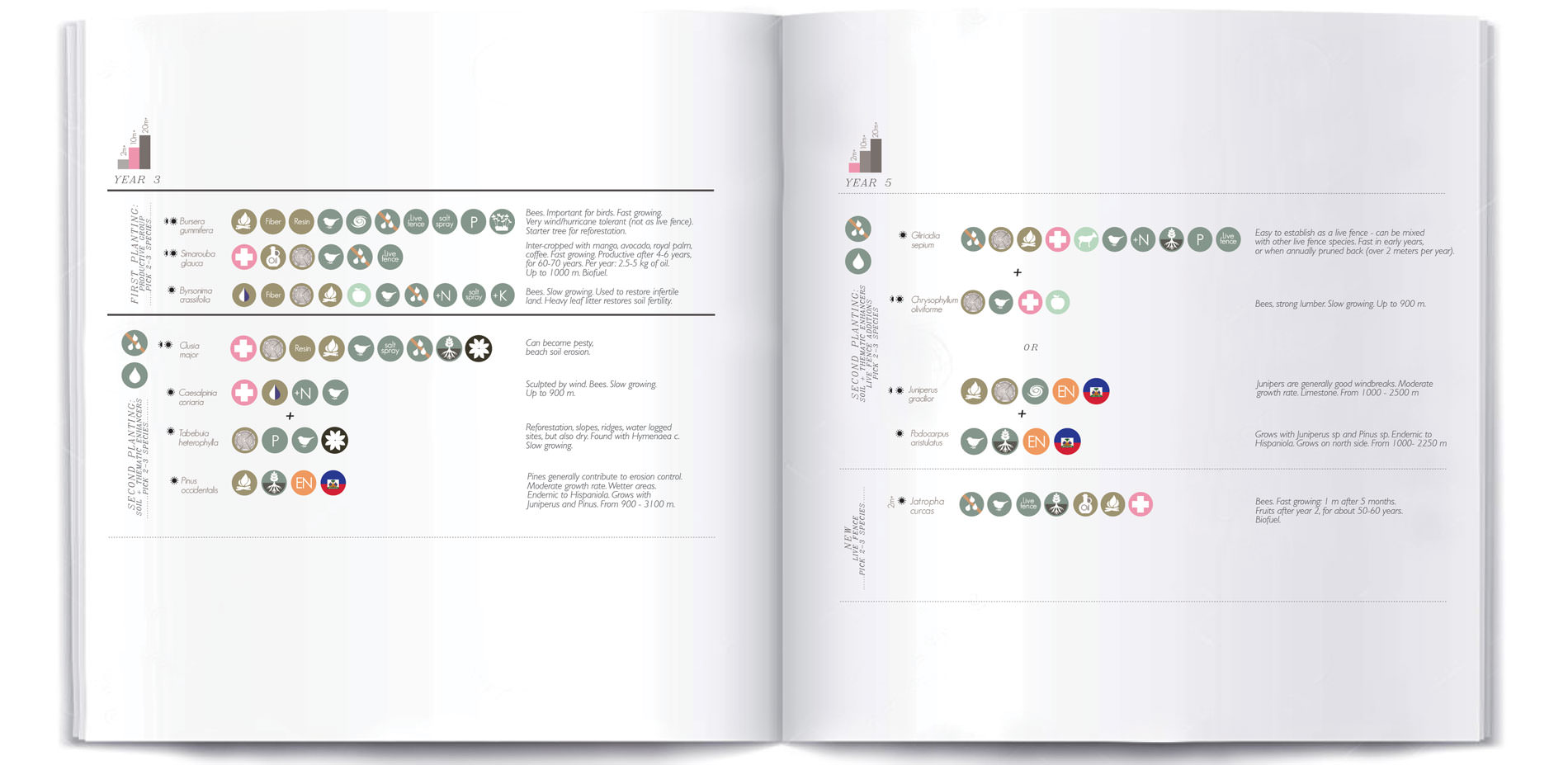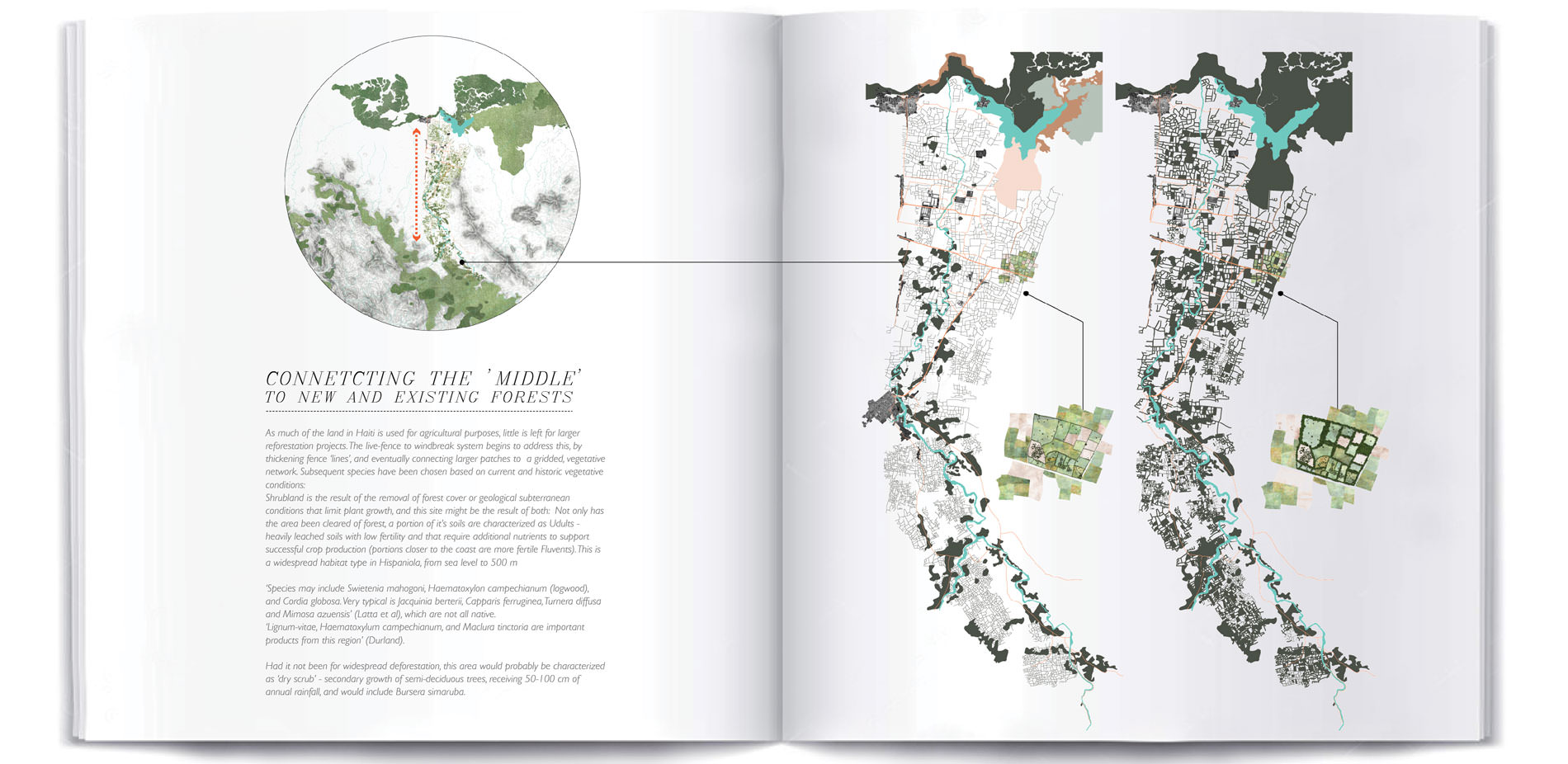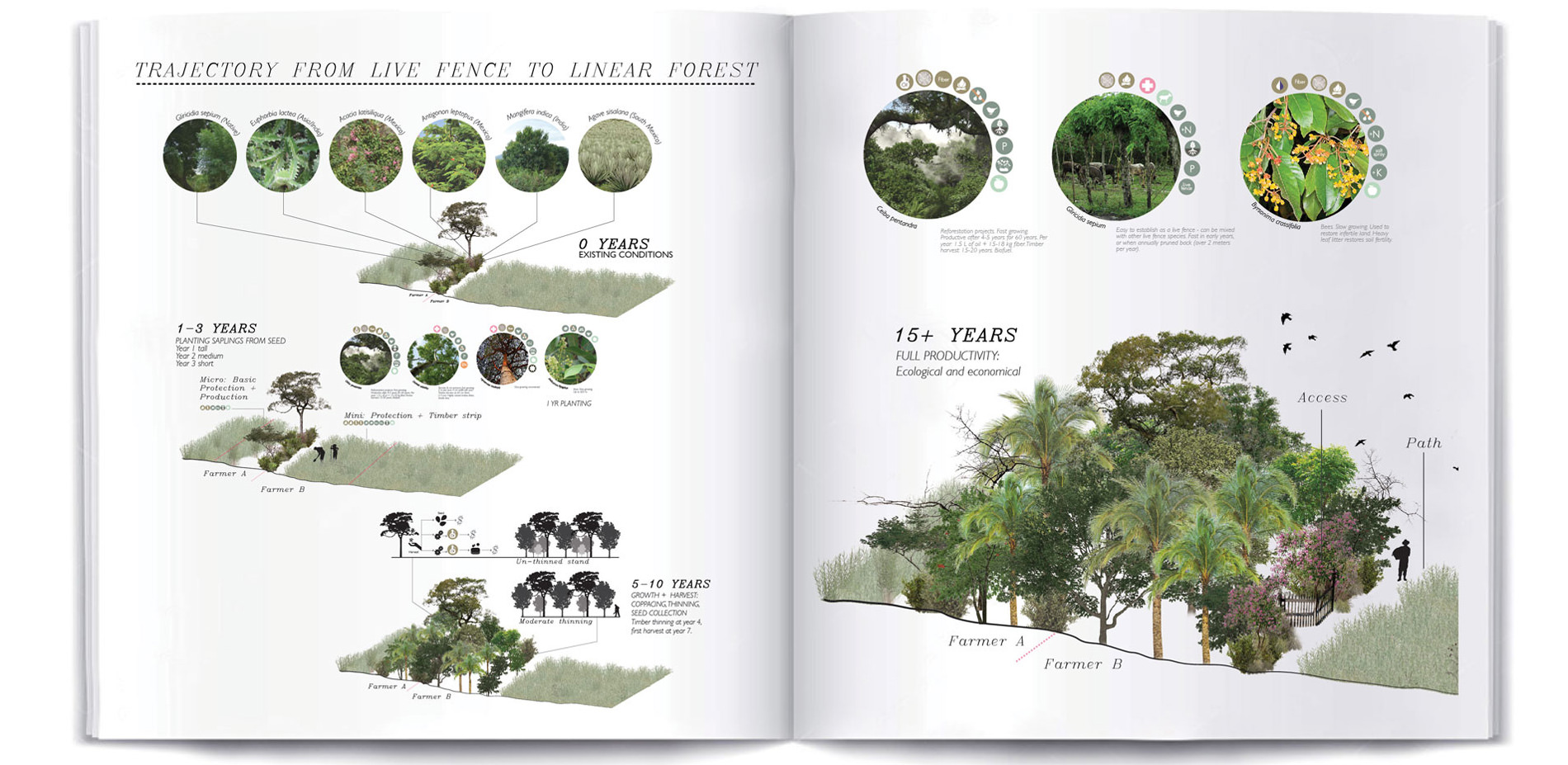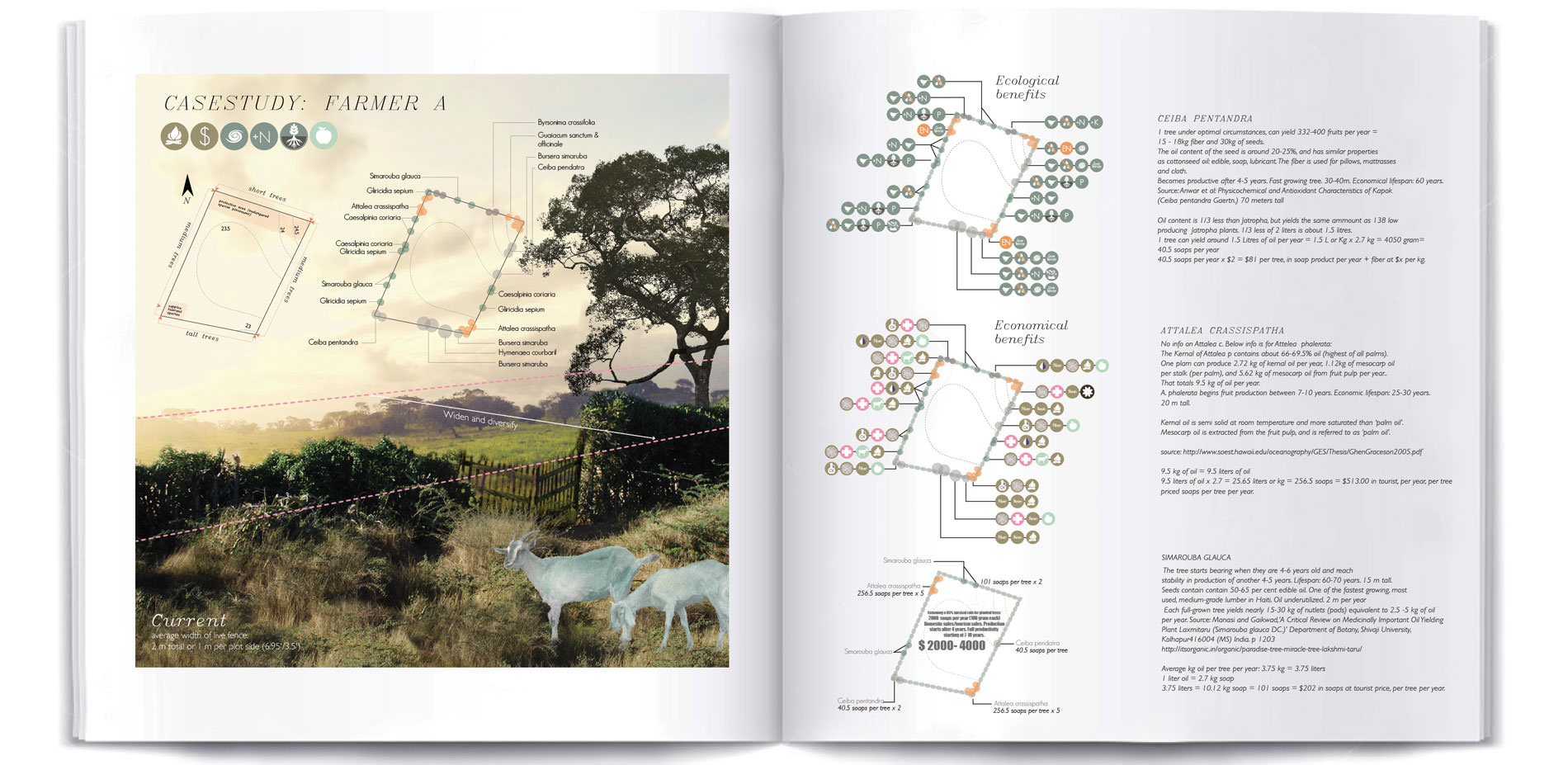FORESTS ON THE EDGE Plant-Based Economies Driving Ecological Renewal in Haiti
HONOR
Analysis and Planning
Haiti | Christine Facella, Student ASLA | Faculty Advisors: Catherine Seavitt Nordenson, ASLA; Matthew Seibert, Associate ASLA
The City College of New York
Timely, useful, highly implementable. You could take this to any number of organizations tomorrow and come away with a plan.
- 2017 Awards Jury
PROJECT CREDITS
Sources
- USAID. Global Market Assessments for Handicrafts. 2006
- McClintock, Nathan. "Agroforestry and Sustainable Resource Conservation in Haiti: Case Study". Bepress. 2003
- van der Horst, D; Vermeylen, S; and Chibwe, T. "Soap Security: African Home Economics in the Aftermath of the Jatropha Biofuel Hype". Solutions, vol 3, no. 6. 2013
- Plotkin, Donna. "The International Traders of Haiti: The Madam Sara". pulisher unknown. 1989
- UNICEF. Retrieved 05.14. 2017
- Caribejournal. Retrieved 05.12. 2017
- Fakuda-Parr, S. "Empowering People: Human Rights Review of Haiti’s Poverty Reduction and Growth Strategies". An Issue Paper. 2009
- New York: The New School
- Bargout, Remy N, and Manish N Raizada. "Soil Nutrient Management in Haiti, Pre-Columbus to the Present Day: Lessons for Future Agricultural Interventions". Agriculture & Food Security 2, no. 1 (2013): 11
- MARNDR: "Synthèse Nationale des Résultats du Récensement Général de l’Agriculture (RGA) 2008/2009". Government Report. 2012
- Damien: Composante de Statistiques Agricoles de Haiti
PROJECT STATEMENT
Using Haiti as a prototypical case-study, this project investigates the utilization of live fences as a catalyst for reforestation through the choreographed design of economically and environmentally beneficial linear forests. Specifically situated for subsistence farmers in developing nations, this supportive ‘fabric’ of forests is poly-functional: buffering neighboring crops from damaging winds, improving crop moisture retention, stabilizing and enriching soils, and--critically--providing the raw resources for a diverse portfolio of local, plant-based income generation. In Haiti, 98% of native forests have been removed and 65% of the land is devoted to agricultural use, and where the majority of farms are delineated by a thin 0.5-5m wide live fence.
A three phase system is proposed: building a foundation with training in soil conservation, followed by a strategic 3-5 year planting scheme, and culminating in a final phase of craftsman skills-building through the selective harvesting and processing of forest components (never fully removing a tree) into products for maximal financial output.
PROJECT NARRATIVE
This project is the direct result of both on-the-ground research and remote analysis undertaken across two years. Visiting Cap Haitien in January of 2017, including to the NGO Jatrofa Projenou in Terrier Rouge, was fundamental in crafting a culturally, ecologically, and economic place-based design. Additionally, observational research has been carried out over 10+ years, working with artisan/crafting communities in developing nations as a product designer.
A large percent of the population around the Cap-Haitian region are subsistence farmers, living on less than $2 per day (USAID). Much of their cultivated land lies on steep hills - with 63% of the country’s terrain at a slope of 20% or more (McClintock, 2003) - and is persistently plagued by soil erosion: It is estimated that 15,000 acres of topsoil is lost to erosion yearly (USAID). This severe lack of healthy forest cover has left the nation significantly more vulnerable during hurricane events than its neighboring Dominican Republic, and hurricane activity is estimated to increase over the next century, leaving Haitian communities at increasing risk.
Adding forest possesses great potential in mitigating that risk. Unlike current reforestation programs that rely on a variety of exotic species and fruit trees, this project takes the unique next step of employing communities of hardy, drought tolerant native species that first and foremost support firewood production (through coppicing),the nation’s leading cause of deforestation. In addition, the species can provide apicultural opportunities, small-scale sustainable timber production and yields of oil-bearing nuts and fruit.
Emphasizing the cultivation of trees and shrubs grown from seed for healthier and resilient root growth, newly planted saplings will benefit from runoff of routine watering as this system lies at the edge of agricultural fields that cultivate crops such as sugar or banana which require high levels of moisture.
This system promotes further processing of harvested parts (nuts, branches, timber from thinning regimes/managed timber patch) into finished products through existing and proposed training programs provided by local Haitian-run NGO’s. This includes soap production as well as furniture fabrication, encouraging the growth of skills and maximizing profit for farmers with less extensive land: A study in Zambia indicates a farmer could collect 3x the profit if nuts from Jatropha curcas were processed into oil, and double or triple of that if the oil was processed into soap (van der Horst et al 2013). For the majority of Haitians who live off less than $2 per day, the additional income can be transformational.
Imports of soap products, furniture , vegetable oil, and mattresses have all been identified as goods that compete with Haitian made counterparts (Plotkin, 1989). The proposed planting species can address raw-material needs of all of the above. In addition, the majority of the proposed oil-bearing plants have been recognized as biofuel sources, potentially reducing the needs for one of Haiti’s most commonly imported goods, petroleum, and addressing the root cause of deforestation, the need for firewood.
US Aid has also recognized the crafts sector as an important economic engine for communities (especially women) who lack access to education and viable skill sets (USAID, 2006). The current illiteracy rate for Haiti is around 49% (UNICEF).
As the tourism industry is projected to grow, communities in the Nord and Nord-Est regions can benefit from incoming tourist dollars: In 2014, Labadee which lies just a few km from Cap Haitien welcomed 477,128 tourists from the cruise industry (Caribe journal, 2014). Several Unesco sites frequented by visitors lie in the region, along with several decaying forts which have the potential to become new visitor hotspots. Fondation pour la Protection de la Biodiversite Marine (FoProBim), is currently working to protect mangroves in Haiti, including patches in Caracol, a few km east of Cap Haitian, and is promoting ecotourism as a source of income for the surrounding community. Each of these areas are proposed locations for co-op markets, where participating families can sell their newly made goods. Over time these general skills possess the potential to generate new tradesmen/women who eventually could connect with artisan coalitions that work with larger, international design companies already doing business in Haiti: West Elm, Donna Karan, Martha Stewart.
Skill building activities along with seed/sapling exchange programs, will be provided in conjunction with existing Haitian organizations such as Jatrofa Projenou in Terrier Rouge, Fondation pour la Protection de la Biodiversite Marine (FoProBim) in Caracol, La Via Campesina, Zanmi Lasante, The Bassim Zim Educational Fund and Mouvman Peyizan Papaywhich, all of which have a variety of successful programs associated with farming, reforestation, and soil conservation.
A major tenet for this system is to be less dependent on foreign aid. The utilization, connection, and enhancement of established and working ‘local’ programs is at the core of this, as evidence suggests that only a small percentage of foreign aid is used for reforestation purposes: In 2007, only 2% of aid was allocated for forestry in addition to agricultural activities (the nation’s largest sector of the economy), mining, aquaculture, construction and tourism projects (Fakuda-Parr, 2009). Furthermore, foreign aid organizations have a tendency to air-drop packaged solutions that are not specifically catered to needs or environment of recipient region, and often disregard local knowledge indicating absence of true partnership with communities (Bargout and Raizada). This system is run by Haitian community members, through Haitian NGO’s.
Ecologically, this system addresses soil erosion which in Haiti has become so problematic that farmer’s themselves have declared this as one of their top 10 barriers to development (MARNDR). ‘Lack of farm training’ ranked as the second largest barrier to development (MARNDR).
Although siltation has fed coastal mangroves, it has contributed to the decline of coral-reef systems, which also provide an important protective buffer from waves, storms, and floods in this hurricane-prone nation. The provision of vegetative cover will reduce erosion, become a consistent source of nutrients to current deficient soils, attract and support pollinators including larger groups of avian-visitors which in turn can boost the tourism sector providing an additional market for newly skilled artisans and their wares.
The submitted Farmers Manual is representational of the first and second phase of this project, and is meant to demonstrate to participating farmers, why such a system is beneficial. It gives a basic visual narrative to the ecological and economical benefits of implementation, followed by detailed visual instructions of how: the farmer first conducts a basic analysis of his land, choses desired system, and is then provided with a palette of plant-groupings from which he can chose. The plants are represented by easy-to-understand icons, representing species characteristics. The plant groupings are divided into two main categories: The Productive Group (fast growing income generators), and the Enhancing Group (nourishes soil and supports themes of apiculture, oil or small-scale timber production). Each year, over a total of 3-5, the farmer plants a community with 2-3 species from the Productive group and another 2-3 species from the Enhancing group, ensuring variety and health of future forest.
